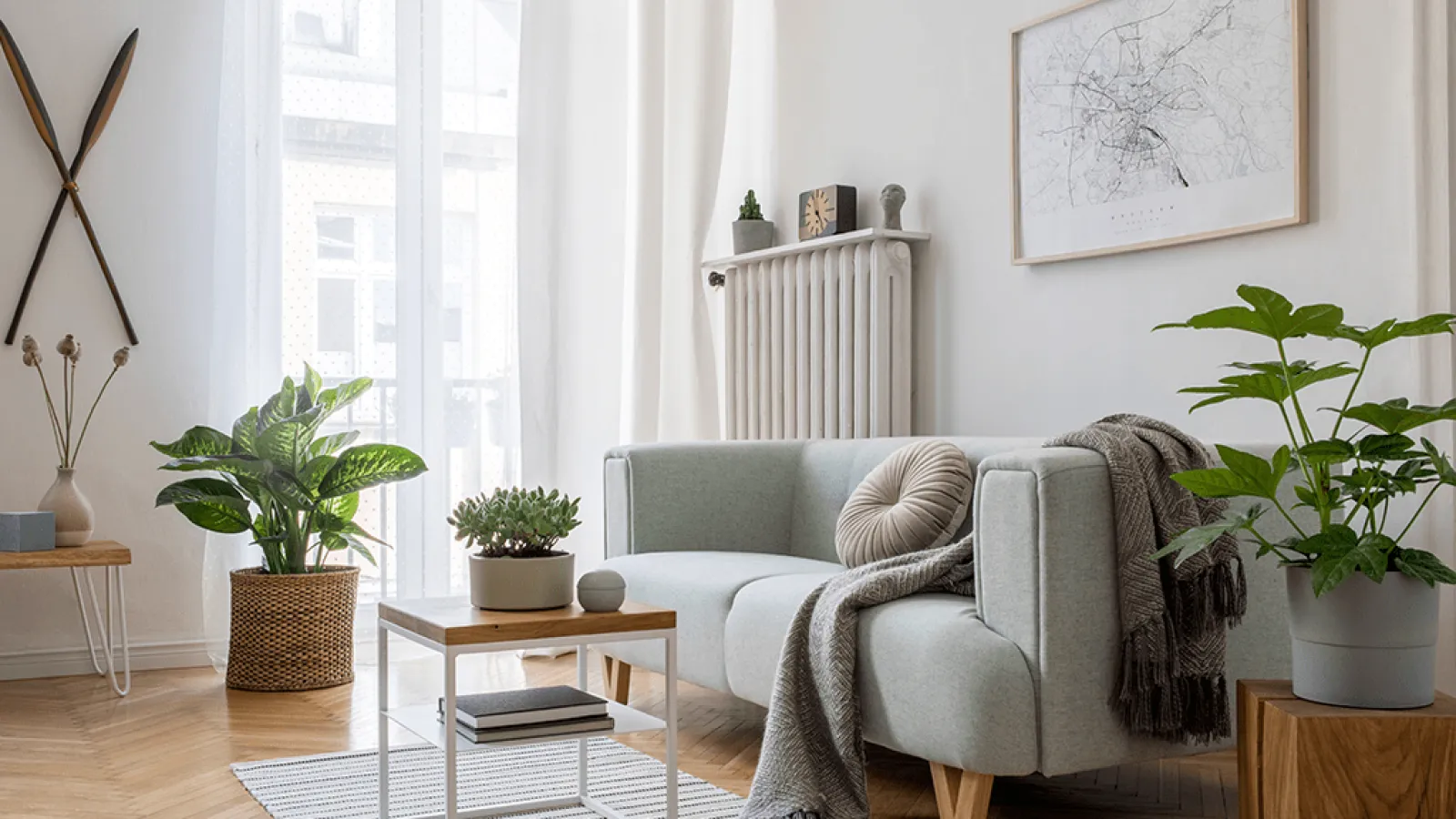The air quality inside Atlanta, GA, area homes plays an important role in the health and comfort of all occupants indoors. Air pollution is often considered an “outdoor issue,” though houses, commercial buildings, schools, and other structures are commonly plagued with higher volumes of airborne pollutants. In our most recent blog, the indoor air quality experts at Estes Services discuss tips to improve the indoor air quality to protect the wellbeing of everyone indoors.
Schedule a consultation with our indoor air quality team today to discover professional HVAC products designed to deliver cleaner, healthier air inside your home.
Is Pollution a Problem Indoors?
Contaminants enter a home’s air supply through a variety of means. Outdoor air pollutants like pollen and allergens can enter as doors open and close, while daily activities inside the home and the use of household products introduce new indoor air pollutants to the home environment, such as cooking or using chemical cleaners and fragrances. According to the Environmental Protection Agency, indoor air is often much more polluted than the air outside due to lacking natural ventilation and habits of household occupants.
We spend an overwhelming amount of time indoors – about 90 percent of our lives, in fact, for the average American. In the midst of the coronavirus pandemic, with social distancing guidelines and more people staying home, the amount of time spent inside the home has increased over the past year. As such, we are constantly exposed to the indoor environment along with an overwhelming volume of pollution held within it.
Importance of Healthy Indoor Air
It’s critical for homeowners to learn how to improve IAQ because ongoing exposure to airborne contaminants inside can negatively impact occupants’ health. Poor indoor air also creates issues that detract from overall comfort inside the home.
Those who live in a home with poor air quality may suffer minor health symptoms like headaches, fatigue, and eye or nose irritations. Many common indoor air contaminants are known triggers for allergy symptoms and asthma attacks, and household members with these health conditions may develop symptoms upon exposure.
Long-term exposure to certain contaminants such as volatile organic compounds within a home’s air supply can contribute to the development or worsening of serious health conditions including respiratory illnesses, cancer, and heart disease.
How to Improve Indoor Air Quality Indoors
Improving IAQ involves controlling the introduction of contaminants to the home environment, increasing the volume of fresh air exchange, and removing airborne contaminants such as pet dander and dust mites that are present within the home.
Control Contaminant Sources
A key method for improving air quality is changing the products used and activities performed inside the home. Limit contaminant introduction by adjusting habits and swapping products for healthier alternatives.
- Brush and bathe pets outdoors whenever possible to avoid pet dander.
- Place door mats at entrances, and ask visitors to remove shoes upon entering the home.
- Do not smoke inside the house.
- Stop using aerosol spray cleaning and personal care products.
- Stop using cleaning products and air fresheners with chemical fragrances – switch to naturally scented or fragrance-free alternatives.
- Use exhaust fans when bathing and range hoods when cooking on the stovetop.
- When possible, cook outside to control contaminants introduced by indoor meal preparation.
- Keep the overhead door open and interior entrance door shut when running vehicles in an attached garage to avoid carbon monoxide exposure.
- Perform activities that produce high levels of pollution outside the home, such as painting, sanding, and other home improvement or hobby tasks.
- Seal duct air leaks, and have duct cleaning performed periodically.
- Install a whole home dehumidifier to remove excess humidity, reduce airborne contaminant concentrations, and help prevent mold and mildew growth in the home.
- Use a vacuum cleaner frequently to remove dust and other contaminants inside your home.
- Place indoor plants around your house.
Improve Ventilation
Increasing ventilation is an important strategy in improving air quality inside, as better ventilation brings in more fresh, outdoor air to replace stale, polluted air trapped inside the home.
- Open windows and doors when outdoor conditions allow, outside of peak pollen season.
- Increase spot ventilation by installing exhaust fans in bathrooms and range hoods in kitchens.
- Install a balanced ventilation system to bring in fresh, outdoor air and exhaust polluted, indoor air. Heat-recovery ventilators (HRVs) precondition fresh air using energy recovered from the air exhausted from the home. Energy-recovery ventilators (ERVs) do the same, plus they capture moisture from exhaust air and add it to incoming air to help maintain balanced indoor humidity levels.
Remove Indoor Contaminants
Improving IAQ also involves eliminating indoor air pollution that has already entered the home environment. Remove contaminants through cleaning routines and the use of IAQ equipment.
- Clean floors and other surfaces throughout the home at least once per week.
- Wash bedding, linens, area rugs, and floor mats weekly using 130°F hot water.
- Wash curtains and fabric window dressings seasonally.
- Install a media air cleaner or air purifier to reduce indoor airborne contaminants as air circulates through the home’s heating and cooling system.
- Change HVAC air filters regularly to ensure the filter is capable of capturing airborne contaminants in circulation to keep them out of the home’s heating and cooling equipment and living areas.
Professional Help for Indoor Air Quality Improvement
Are you looking for ways to improve indoor air quality in your house? There are many actions Atlanta homeowners can take that boost air quality inside their residences. However, home strategies for improving IAQ greatly benefit from the installation and use of ventilation systems and air quality equipment that work with the HVAC system, such as whole home dehumidifiers and media air cleaners.
Turn to Estes Services for the high-quality products and expert installation services needed to begin using these effective solutions to improve the air in your home. We are your partner in the ongoing battle in improving indoor air quality. Contact us today to request an estimate for installation of IAQ equipment.


